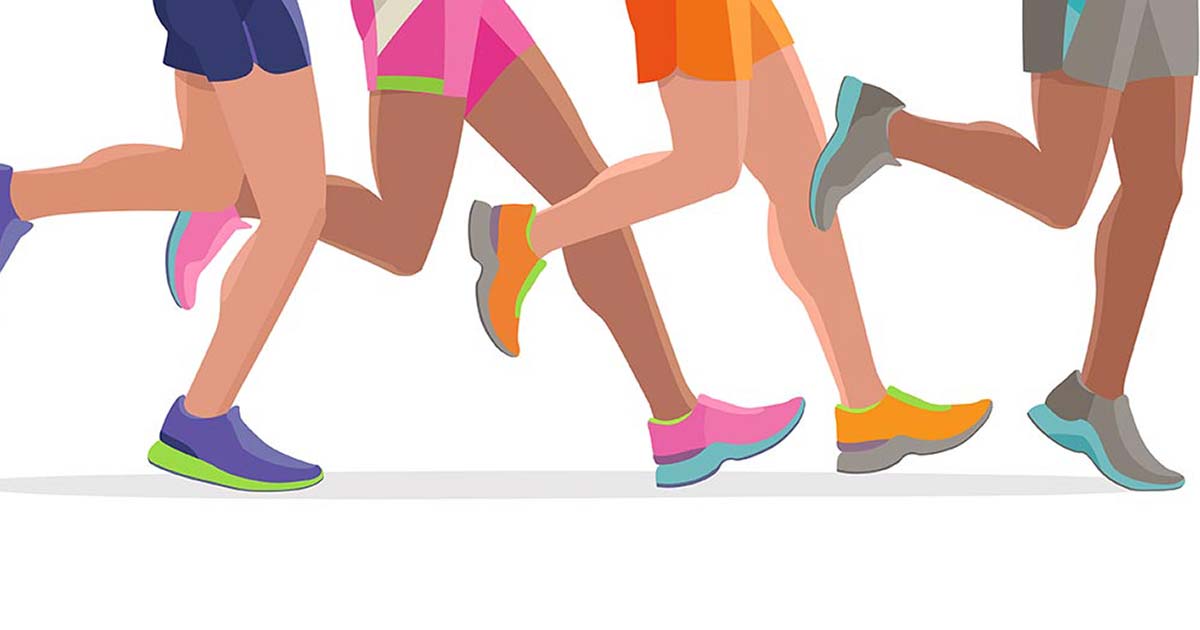Injury Prevention for First-Time Marathon Runners
Advice to improve your movement, fitness, and overall health from the world's #1 in orthopedics.
When you added “run a marathon” to your bucket list, you likely pictured yourself doing a lot of running, not resting, to prepare. That makes sense, of course. But movement is only half the equation when it comes to preparing for an endurance event.

“Life is a great balancing act, as is training for your first marathon,” says Kathryn D. McElheny, MD, a primary sports medicine physician at HSS. “It is important to maintain a state of balance between workload and recovery, which can help you prevent injury as you build endurance.”
Dr. McElheny and colleagues studied this delicate relationship in 720 first-time marathon runners during the 12 weeks before the 2017 New York City Marathon. They found that nearly half developed a minor injury and almost 10% had a major one. Of the more serious injuries, more than 80% were related to overuse. That means these athletes did too much too soon or for too long—and without enough time, hydration, sleep or nutrition to allow their body to bounce back. On race day, one in six of those who ran developed an injury, and a handful were unable to finish the race.
The good news? While injuries may be common among first-time marathoners, they’re not a given. Here, Dr. McElheny explains a bit more about the factors involved in training, rest and recovery—and steps you can take to finish strong.
An overview of overuse injury
Any type of standing physical exercise involves a little injury, so to speak: As your muscles work and your bones absorb impact from your feet hitting the ground, your tissues break down a bit. During the time between workouts, those small tears repair themselves. Over time, you gain strength and endurance, and your bones become stronger in the areas where they were stressed. “However, when the repetitive work outweighs the body’s ability to remodel and strengthen, overuse injuries can occur,” says Dr. McElheny. “Bones as well as ligaments and tendons are particularly susceptible to overuse injuries.”
To add insult to injury, the initial pains and problems of beginning an intense running routine can cause runners to change their body mechanics, or the way in which they carry their bodies when in motion. Fatigue—whether caused by too much mileage, too little sleep, too much stress, too little strength or too little nutrition—can make you slump, shorten your stride, shuffle your feet or otherwise change your gait. This in turn shifts the workload to bones and muscles that you wouldn’t normally use, which puts them at risk for injury too.
Bottom line: Before pushing yourself past your current limits, make sure your body is ready for it.
Deal with existing injuries first
A history of workout-related injuries is one of the greatest risk factors for new injuries. If you are already having some type of pain during workouts, see a sports medicine or sports injury specialist before you begin marathon training. They can help identify the root cause of your pain as well as help you address it. They can also point out if your body position or other habits might be raising your risk of injury and give you pointers on improving. Addressing these issues before you begin training can not only help you heal but also help prevent future problems. You should also see a doctor if you have pain that lasts more than a few days after a workout.
Make a run to the shoe store
Running in ill-fitting, too-old or poorly made shoes can lead to injuries, even if you have fantastic running form and lots of experience. Don’t wait for knee or ankle pain to remind you it’s time for new running shoes; keep track of your training mileage on an app or on paper and replace your running shoes after 300 miles. Rather than shopping just anywhere, consider visiting a store that specializes in running shoes and has pros on staff who can fit you in shoes designed for the unique characteristics of your feet (such as arch height and foot width).
Build a strong foundation
Muscle imbalances are a main cause of overuse injury. They happen when one muscle group is too weak to do its job, causing nearby muscles to chip in and help out. The more this happens, the greater the imbalance becomes. You may even have muscle imbalances just because of your job: People who drive or sit at a computer, for example, often have tight hip muscles and weak hamstrings. Some of the most common weak areas in runners are the hips, butt and core. Engaging in a strength training program that targets these muscles may be helpful in preventing imbalances.
Ramp up mileage over time
It’s important to increase your mileage gradually. Adding too much too soon can overstress both the muscles and the bones. A good guideline is to increase your running time or mileage by no more than 10% per week. That means if you’re running 5 miles at a stretch in one week, you’d only add a half-mile (or less) to each of the next week’s runs. Also consider signing up for a half-marathon before going for the full. In the 2017 study, Dr. McElheny’s group learned that training injuries were less common among runners who took this approach. Here’s a 12-week program that can help you work up to a 5K or 10K race. The New York Road Runners also offers free beginner, moderate and advanced training guides for these distances as well as half- and full-marathons.
Take a load off (now and then)
To give your body a break, take some of your runs on softer surfaces, such a bridle path or an indoor or outdoor running track. Also weave in some cross training with low-or-no-impact forms of exercise such as cycling, swimming and elliptical machines. This type of cardio training can “count” toward your total mileage, rather than being done in addition.
Schedule time for recovery
We may think of recovery as resting (or taking a day off from training), but your body needs more than that to rebuild muscle, remodel bone and recharge your mental energy stores. It also requires good nutrition and proper sleep. You should aim for at least seven hours of sleep per night, per the National Sleep Foundation. Most Americans fall short on this—and sleep is when your body and brain do much of their recovery. While you snooze, go ahead and imagine yourself crossing the finish line. By taking the above steps right now, you’re setting the stage for making your first-marathon dream a reality.
Published 6/14/2021




